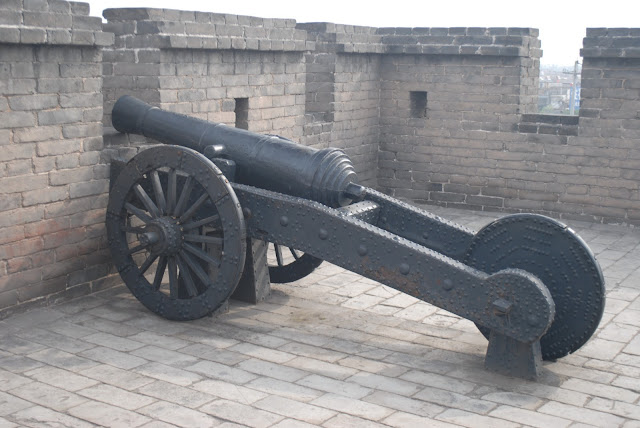Although perhaps not as spectacular as Xi'An, Pingyao is a remarkably well preserved ancient city. It was founded in its current form in the 14th century during the Ming Dynasty. Although still heavily influenced by tourism, it is the most authentic of the old towns that I've been to.
Pingyao is most famous for its city walls, as it is one of the few cities with its ancient wall still wholly intact. Some think the original city wall may have been built as early as the 9th century BC. The modern walls, however, were built in 1370. The wall is much less uniform than many of the other, more dramatically restored walls. It is, on average, 10 meters tall, 8-12 meters wide at the base, but only 2.5-6 meters wide at the top.There are 6 gates, resulting in a shape likened to a turtle: one in the south (head), one in the north (tail), and two on both the East and West sides (the legs). There are 72 defensive towers and 3,000 crenels. In total the wall is 6.2 km long, just under half the length of the Xi'An wall.
 |
| South gate, always the most elaborate. |
 |
| The north wall. |
 |
| The now-dry moat. |
 |
| North gate. |
 |
| Northwest tower. |
 |
| Partially reconstructed walls. |
 |
| The top of what seems to be a gutter. |
 |
| Ruins of the southern west gate. |
 |
| Looking towards the center of town. |
 |
| East gate. |
 |
| The eastern portion of the wall is in the worst shape, but it's interesting to see some of the original components. |



























































